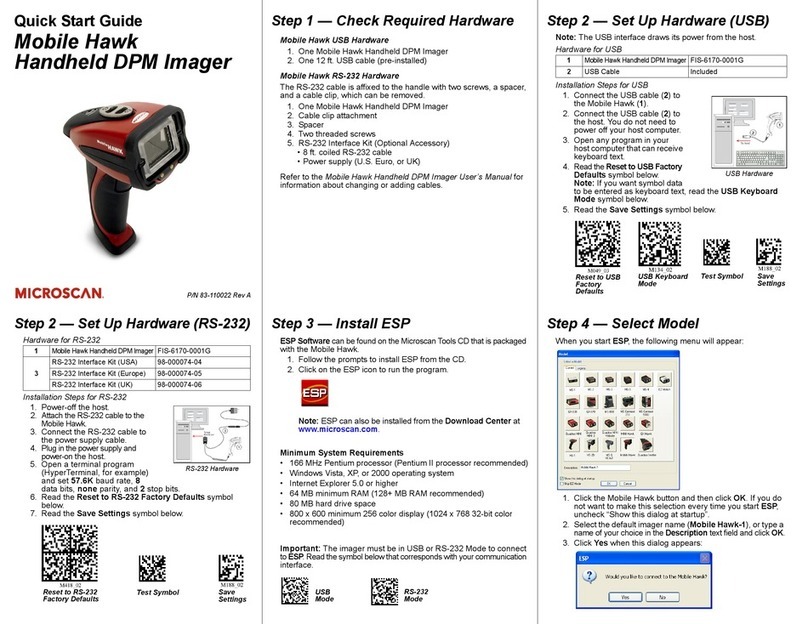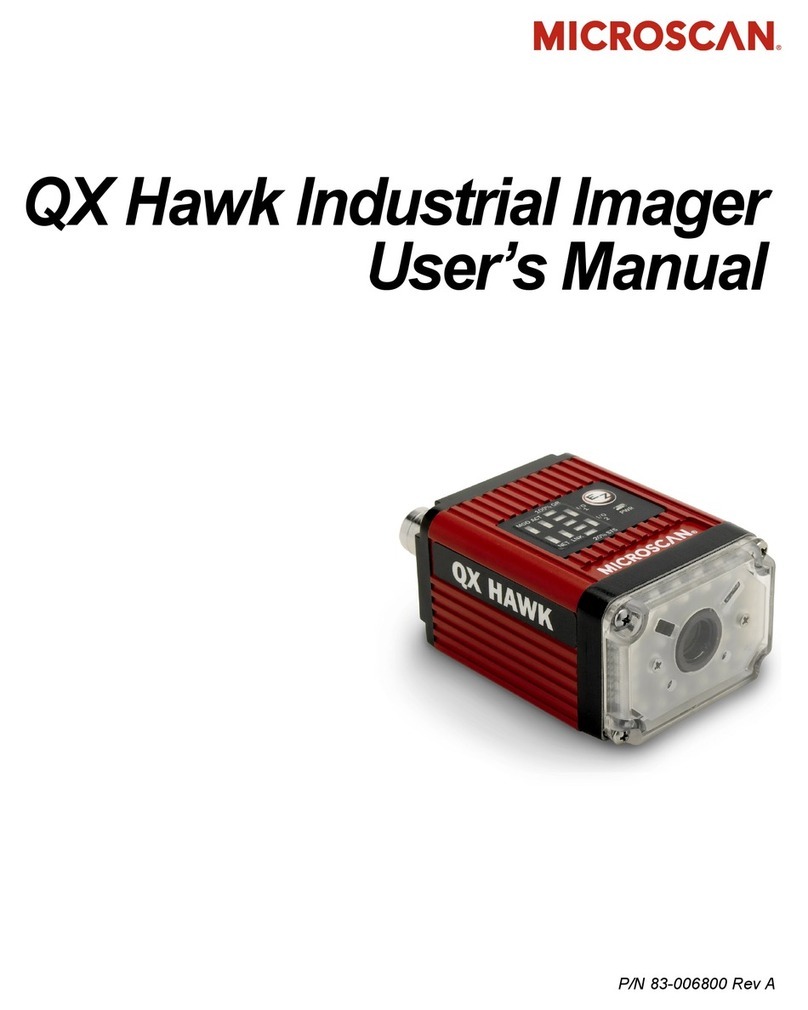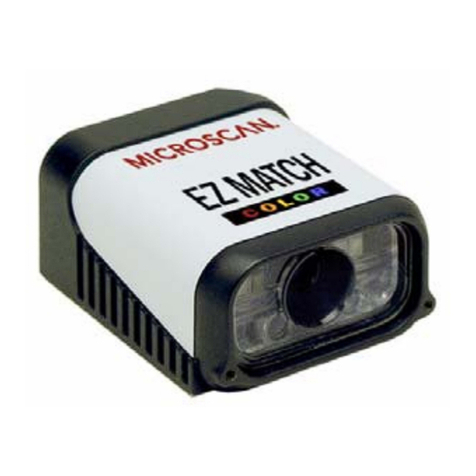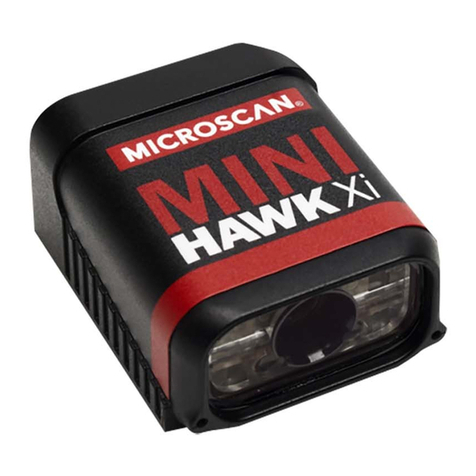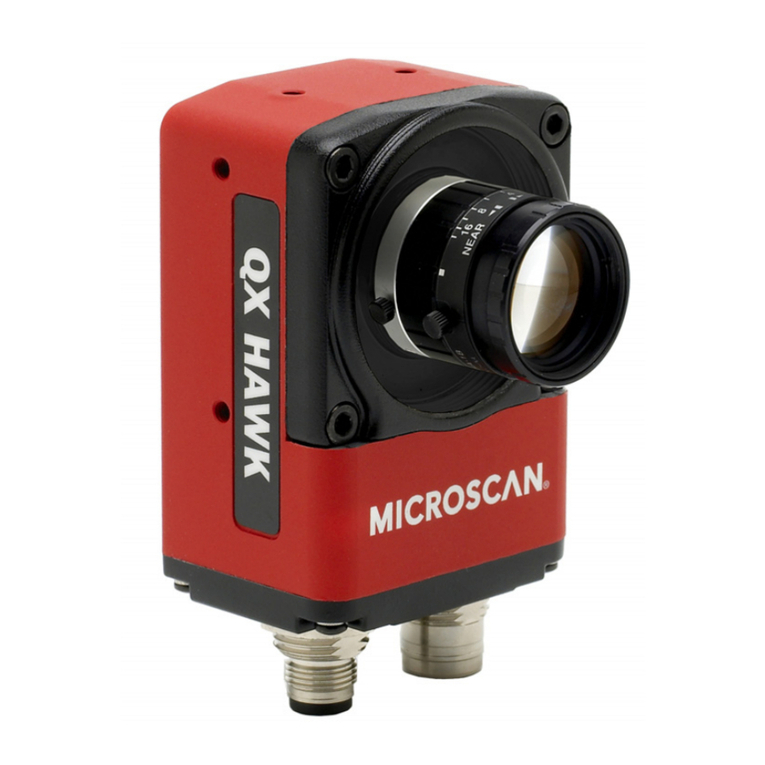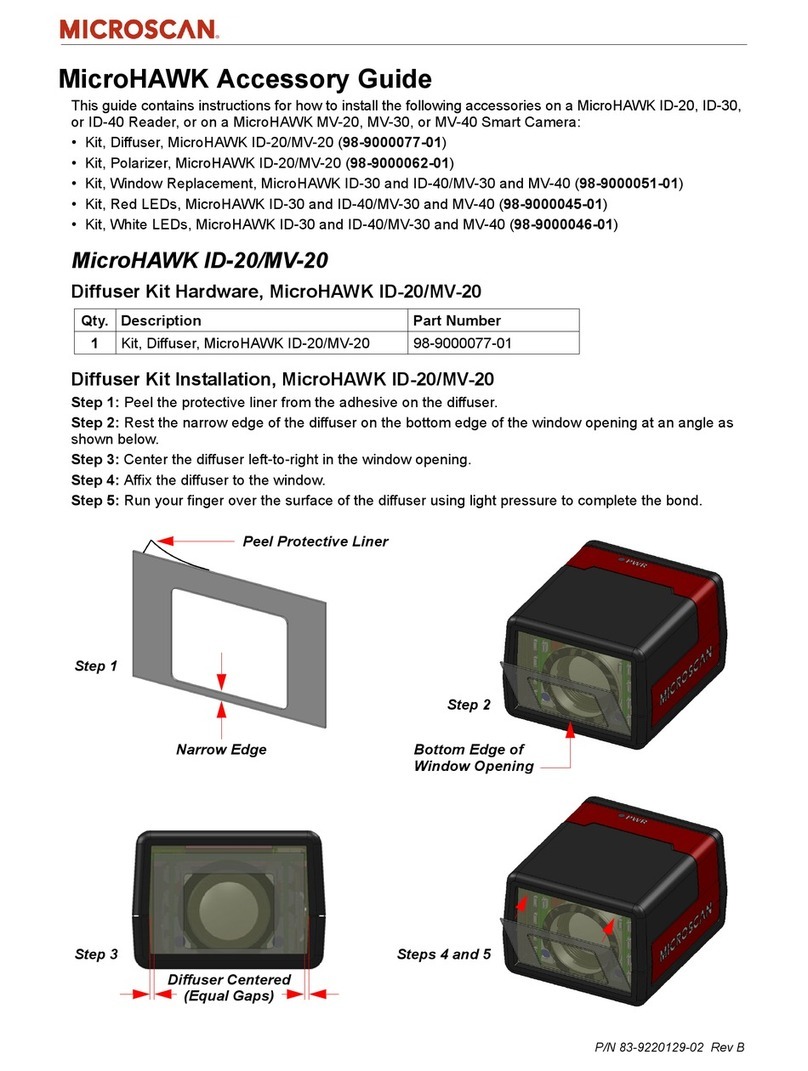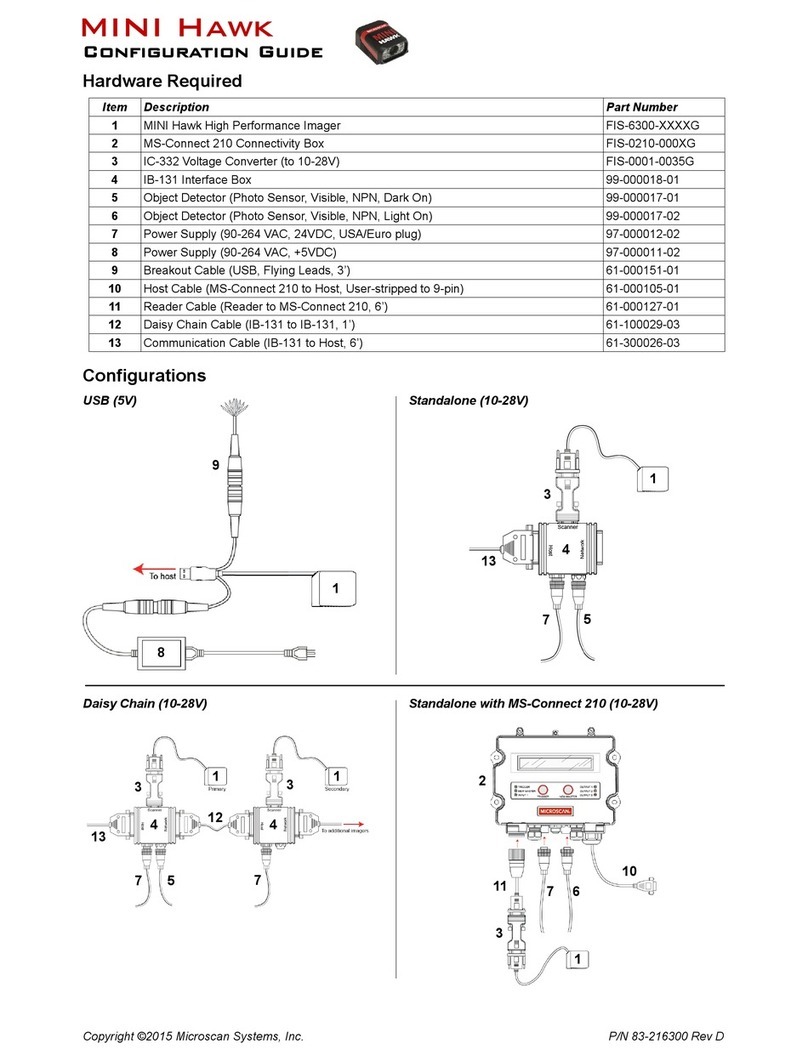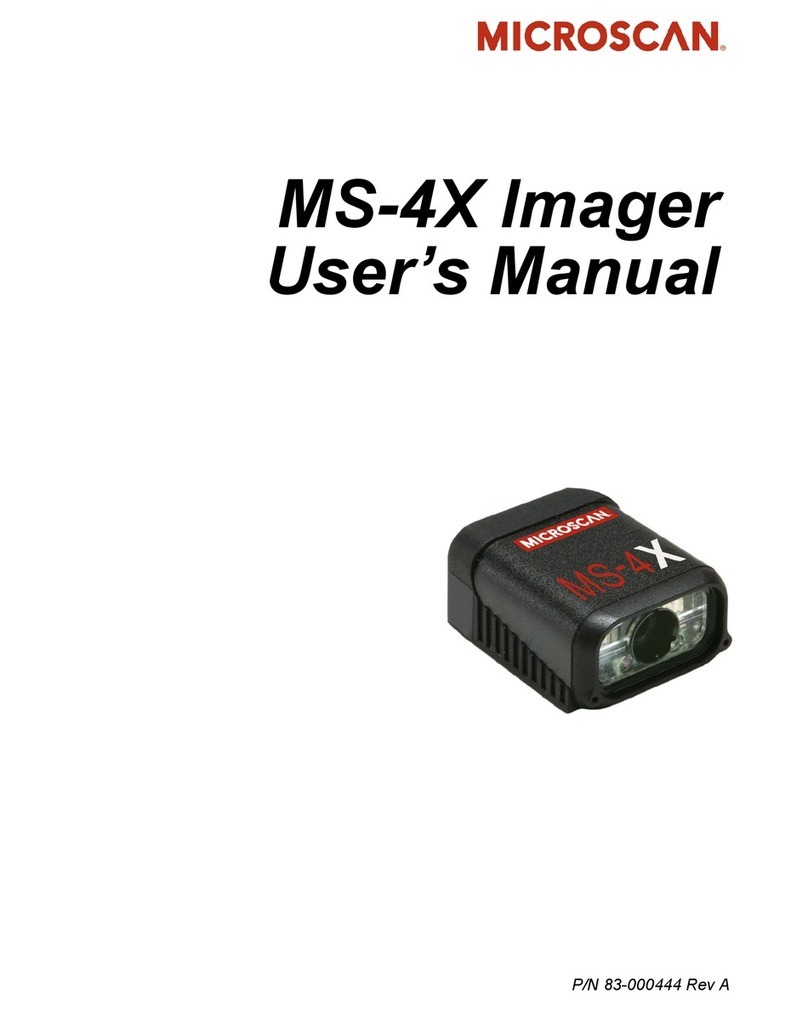
Copyright ©2012 Microscan Systems, Inc.
Step 6 —
Connect
To connect using the Connection Wizard:
• Click Connect on the menu toolbar, and then select Connection Wizard.
• Select the communication interface required by your application.
• Configure settings as required by the application, and click Connect.
• When a connection is established, the green indicator in the status bar at
the bottom right of the screen will be visible:
Important: The imager is in Continuous Read Mode by default. For
best connection results, be sure that no decodable symbols are within the
imager’s field of view while attempting to connect.
Step 9 — Test Read Rate
Read Rate indicates the number of successful decodes per second
achieved by the imager.
Test Read Rate by EZ Button
1. To start the Read Rate test, hold down
the EZ Button about three seconds
until you hear three short beeps. The
20%
,
40%
, and
60%
LEDs will illuminate.
While the object is being inspected, the
Read Rate LEDs will indicate the read
rate percentage on the back of the unit.
2. To end the Read Rate test, press the
EZ Button and quickly release.
Test Read Rate by ESP
1. Click the Test button to start the Read
Rate test and Stop to end it.
If a symbol has been successfully
decoded, its data and related features
will be presented in the field below the
image display window. Also, while the
object is being inspected, the Read
Rate LEDs will indicate the Read Rate
percentage on the back of the unit.
2. To end the test, click the Stop button.
Note: Read Rate can also be tested using the Read Rate interface in
Utilities.
Test Read Rate by Serial Command
You can also start a test with the <C> or <Cp> command and end it with the
<J> command.
MINI Hawk Xi Read
Rate LEDs and EZ
Button
MINI Hawk, Quadrus
MINI, Quadrus MINI
Velocity Read Rate
LEDs and EZ Button
Step 7 — Locate the Symbol
Locate by ESP
•InESP’s EZ Mode, click the Locate button to enable the blue target
pattern.
The symbol in the field of view will appear in the video view beneath
the
Locate
and
Calibrate
buttons, and you will see the blue target
pattern
projected
from the front of the imager.
• Center the target pattern on the symbol.
At 2 to 3 inches, the pattern resembles an X. At 3 to 6 inches, the
pattern resembles a V.
Important: The entire symbol should fall within the field of view (FOV)
of the imager. The field of view is what appears in
ESP
’s
Locate/Calibrate
window in EZ Mode.
• Click the Stop button to end the Locate function.
Locate by EZ Button
If you are not connected to a host computer, the EZ Button allows you to
locate the symbol in the imager’s field of view.
• Hold down the EZ Button for about one second and release when you
hear one short beep. The amber 20% LED will illuminate, and you will
see the blue target pattern projected from the front of the imager.
• Center the target pattern on the symbol.
Note: To end all EZ Button functions, press the EZ Button once and
quickly release.
Step 10 — Configure and Save
Click the App Mode button to make configuration changes to the imager.
The following modes are accessible by clicking the buttons at the top of
the screen:
• Click the EZ Mode button to return to EZ Mode.
• Click the Autoconnect button to establish communication.
• Click the Send/Recv button to send or receive commands.
• Click the Switch Model button to open the model menu, or to return to
a previous model.
•
Click the
Parameters
button to show the tabbed tree controls for
Communication,
Read Cycle, Symbologies, I/O Parameters, Symbol
Quality, Matchcode, and Diagnostics.
• Click the Setup button to access a Camera Setup tree control and
Video view, Evaluate image captures, Calibrate the imager, set the
Window of
Interest, load capture settings and processing settings in the
Configuration
Database, set up output filters and parse symbol data in
Ordered Output and Output Format, and control multiple read cycle
functions in Dynamic Setup.
• Click the Terminal button to display decoded
symbol data, and to send
serial commands to the imager using text or macros.
• Click the Utilities button to test Read Rate, request or clear Counters,
enable or disable the imager or send output pulses in Device Control,
determine
the Differences from Default in the current settings, add or
remove master symbol data in Master Database, and verify or update
the imager’s Firmware.
For further details, see ESP Help in the dropdown Help menu.
Step 8 — Calibrate
Imager settings can be adjusted automatically for optimum performance by
either the EZ Button or by ESP.
During the calibration routine, the imager will flash its Read Rate percent
LEDs and illumination LEDs while searching camera settings and determining
the best configuration for decoding symbol data. Upon successful completion
of this routine, a green LED pattern will flash brightly and illuminate the symbol.
If unsuccessful, the imager will emit 5 short beeps and stop searching.
Calibrate by EZ Button
1. Hold down the EZ Button for about two seconds and release when you
hear two short beeps. The 20% and 40% LEDs will illuminate.
2.
The imager will search camera settings to determine the best configuration
for decoding symbol data.
Note: To end all EZ Button functions, press the EZ Button once and
quickly release.
Calibrate by ESP
1. Click the Calibrate button.
2.
The imager will search camera settings to determine the best configuration
for decoding symbol data.
A successful calibration will display a green frame around the symbol,
and the following message will appear: “Uploading all reader parameters.”
After a moment the symbol data will be presented in the field below the
image display window.
Calibrate by Serial Command
Send <@CAL> from a terminal program to begin calibration.
Step 5 — Select Model
When you start ESP, this menu will appear:
1. Click the button showing the imager used in your application.
2. Click OK.
Note: You can also simply double-click the button showing your
imager to make your selection.
3. Click Yes when this dialog appears:
Note: If you need to select another model later, click the Switch
Model button near the top of the screen or use Model > New
Model in the menu toolbar.
